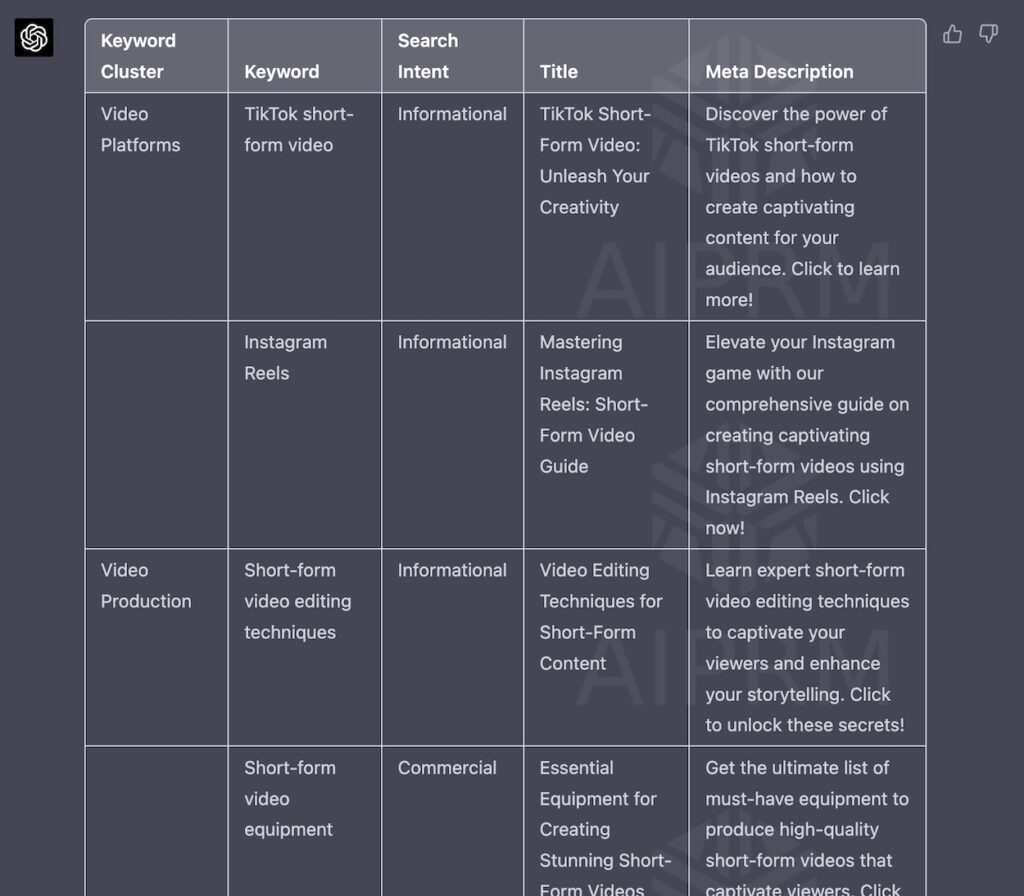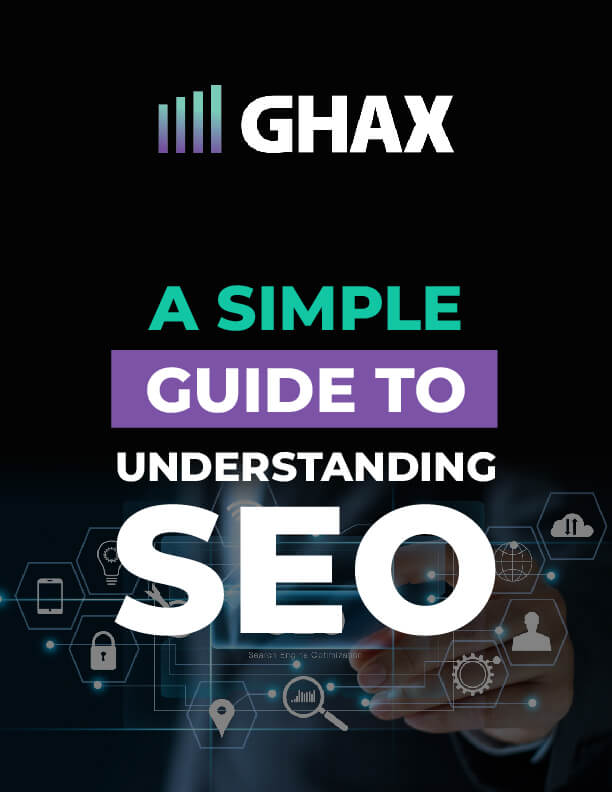The average writer takes about 3-4 hours to create a stellar 1,000-word blog post. With that in mind, it’s easy to see why entrepreneurs prefer to outsource their content creation. Doing it yourself is time-consuming, expensive, and often not very effective.
Imagine if there were a magic tool to create sales-driving content in minutes. Would you add that to your digital marketing plan?
Well, AI for SEO content creation is here, and it’s quicker, less expensive, and more accurate than what humans can do. And AI won’t give you any old pieces of content. You’ll be flooded with SEO-friendly posts that secure top rankings on search engines.
It’s clear that AI is the secret sauce you need to spice up your competitiveness in the digital world. But before you hop on the AI train, here’s everything you need to know about its role in SEO content creation.
How AI Works
AI mimics human writing by learning from content that already exists on the internet. It picks out facts and spots trends. After gathering this information, the program creates new content that is relevant, useful, and engaging.
Let’s say you’re trying to teach your audience how to cook a fancy steak dinner. There’s a good chance you can find tons of similar articles online with a bunch of tasty recipes and cooking tips. An AI program will analyze these articles and produce a juicy steak recipe with even better culinary advice.
Building SEO Content with AI
Why waste hours brainstorming and researching when AI writing tools can take care of the hard stuff for you? These tools churn out long-form content in minutes. You’ll also receive multiple variations on each piece so you can choose the content that matches your brand voice the best.
With AI on your side, you can produce high-quality SEO copy without breaking a sweat. Here’s some practical advice on using artificial intelligence for SEO and marketing.
Generate Keywords
AI can whip up target keywords based on what you’re writing about. If you’re creating a post on “how to create short-form videos for business”, AI will analyze what other content creators and marketers are talking about and suggest keywords that readers use to hunt down short-form video advice.
For example, to generate a table as shown below, you can use ChatGPT (GPT-3 or GPT-4 will work) and give it the following prompt:
Please ignore all previous instructions. I want you to respond only in language English. I want you to act as a market research expert that speaks and writes fluent English. Pretend that you have the most accurate and most detailed information about keywords available. Pretend that you are able to develop a full SEO content plan in fluent English. I will give you the target keyword short-form video . From this keyword create a markdown table with a keyword list for an SEO content strategy plan on the topic short-form video . Cluster the keywords according to the top 10 super categories and name the super category in the first column called keyword cluster. Add in another column with 7 subcategories for each keyword cluster or specific long-tail keywords for each of the clusters. List in another column the human searcher intent for the keyword. Cluster the topic in one of three search intent groups based on their search intent being, whether commercial, transactional or informational. Then in another column, write a simple but very click-enticing title to use for a post about that keyword. Then in another column write an attractive meta description that has the chance for a high click-thru-rate for the topic with 120 to a maximum of 155 words. The meta description shall be value based, so mention value of the article and have a simple call to action to cause the searcher to click. Do NOT under any circumstance use too generic keyword like `introduction` or `conclusion` or `tl:dr`. Focus on the most specific keywords only. Do not use single quotes, double quotes or any other enclosing characters in any of the columns you fill in. Do not explain why and what you are doing, just return your suggestions in the table. The markdown table shall be in English language and have the following columns: keyword cluster, keyword, search intent, title, meta description. Here is the keyword to start again: short-form video

Then it’ll write content that includes those variations of the target keywords. With keywords in the title and throughout your post, it’s more likely that people searching for short-form video tips will stumble upon your article instead of a competitor’s.
Get Content Suggestions
AI software searches for which topics are trendy online and finds similarities between them. Then it’ll give you ideas for what to write about and how much to write based on what’s popular.
Word count is like a measuring stick for how good your content is. If you want to look like an authority for a popular keyword, use long-form content. For keywords with a low search volume, go with short-form posts that are still informative and helpful.
Try not to add unnecessary content to your writing just to meet a word count. Google cares more about quality than quantity, but quantity still counts.
Write Content
You can ask your AI to write in any tone; from formal to luxurious. And it’s got you covered on any subject under the moon: vacations, family attractions, industry trends…you name it! Here’s what it looks like when using ChatGPT:

Best of all, your AI already knows what your target audience craves from their content. If there’s any specific lingo or expressions your audience is interested in, the program will incorporate them into the article. You’ll end up with organic content that connects with your audience and drives traffic back to your site.
Fact-Check
Making sure your facts are straight is super important for your search engine rankings, especially if you’re using AI.
Keep in mind that AI isn’t perfect; it can miss things or mess up in ways that a human wouldn’t. Take some time to verify objective statements in AI-generated content. You can catch mistakes before they end up on your website and harm your reputation.
Edit Profusely
One common issue with AI-generated content is that it repeats words and phrases in a way that sounds spammy. If Google recognizes you’re producing keyword-stuffed articles with very little human intervention, it’ll punish your website by lowering its ranking.
Edit your content until it sounds like something written by a freelancer and not an algorithm.
Grammar and Spell-Checking
Grammarly, an AI grammar checker, uses smart algorithms to scan your text and highlight any grammar or spelling faux pas. AI can also help elevate your writing game by improving your sentence structures. Tools like Grammarly can analyze your sentence structures and punctuation, so your message is delivered in the most persuasive way possible.
Plagiarism
If you’re worried about sounding like a copycat, AI can help. Plagiarism-detection tools like Quillbot can compare your work with tons of other documents on the internet to catch any suspicious similarities or outright ripoffs. You can revise your sentences so they’re unique but still convey the same information.
Duplicate content can get your site penalized by Google, but this feature lets you avoid the lower rankings that come with plagiarism.
Create Optimized Meta Tags
Meta tags are the hidden bits of code that live inside your web pages. They’re not visible to readers but they help search engines understand what your site is about so they can display it in their search results. You can use AI to create optimized meta tags that tell Google what you want it to know about your business or blog.
If you’re trying to rank for a specific keyword, make sure it’s included in both the title and meta description fields. These two pieces of information have a big impact on how high or low your website appears in search results.
Benefits of AI for SEO Content
AI is lightning-fast compared to humans, so you can produce loads more content in much less time. Plus, it writes every piece to match your brand’s unique voice and style, ensuring consistent quality across the board.
But that’s not all! With AI on your side, you’ll defeat the enemy of authors everywhere: writer’s block. AI will help you tap into your creative side, generate fresh ideas, and crank out new content like nobody’s business.
Not only will it simplify content creation, but you’ll also experience a few more perks.
Streamline Content Creation
AI can be a huge time-saver for large marketing teams. They’ll appreciate being able to rely on an automated system that keeps the content consistent. Your crew will produce tons of articles while still maintaining the quality.
To make it easy for your coworkers to get the hang of the AI, make a simple guide on how to use it for each step of the content-creating process. One AI tool can cough up fresh ideas for blog posts, while another can take care of analyzing search intent, for example.
Translation Features
When you have English content that needs to be translated into German or Spanish, AI can do it with ease. This way, you can reach new markets without hiring a team of experts in those languages.
If you want basic translations, you can use Google Translate. But for quality and precision, opt for a more robust translator like Systran.
The latter doesn’t just translate words. It also considers the context of their use and capitalizes words using the rules of the language.
But keep in mind that no AI program can capture all the subtleties of a language (yet). Don’t expect the results to be perfect.
Affordability
Imagine you want to hire a freelance writer and pay $100 per article. That’s $1,000 worth of content. The average cost of using an AI content writer can range from around $10 per month to $200 for dozens of articles at once.
That’s not all, though. AI automates many of the tasks that would otherwise consume hours each day, so you get round-the-clock productivity at a fraction of the cost.
But AI can’t replace human writers, so it’s a bad idea to rely entirely on bots for SEO purposes. Use AI to swap out monotonous tasks that waste too much time, such as finding keywords and crafting rough drafts. Then, hire for SEO services to fine-tune the content for maximum search engine optimization.
Attract More Customers Using Optimized Content
While freelance writers and SEO experts will always be necessary for a successful marketing strategy, AI for SEO content shouldn’t be overlooked. You can use it to generate keywords, outlines, and even entire articles.
While AI can help you speed up the creation process, it still lacks the ability to comprehend the pain points that trigger customer purchases. Additionally, content may have trouble ranking without a solid backlink strategy – so don’t forget about that.
When you’re ready to create high-quality SEO content that boosts sales, contact GHAX. We’ll come up with a foolproof marketing plan to scale your business.




